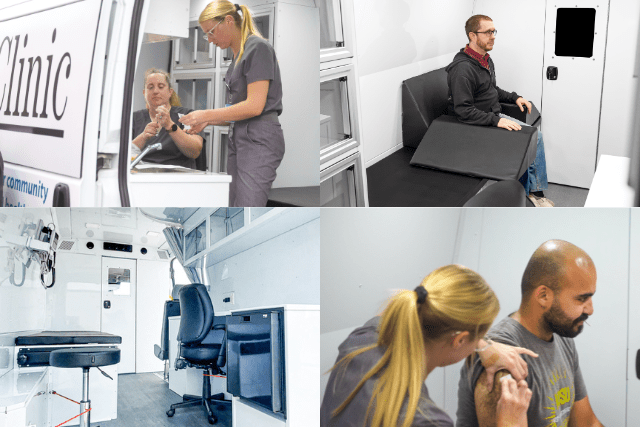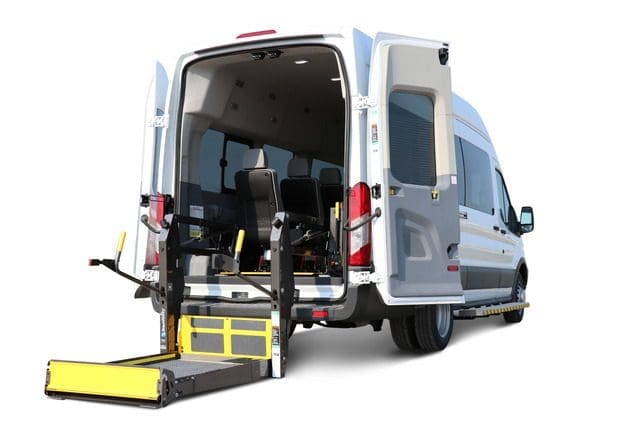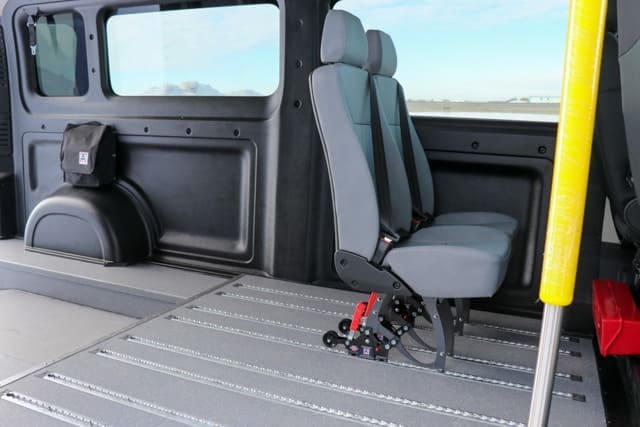It’s a tough headline to read. As of around November 10, 2025, Canada has officially lost its measles elimination status, a title it held proudly since 1998. If you’re leading a community health organization, you likely feel frustrated and deeply concerned. You know the solution, but you also see the gap. The challenge isn’t just the vaccine; it’s the access. It’s reaching communities in northeast B.C. or families in southwestern Ontario who have fallen through the cracks.
Failing to close this gap means we risk this outbreak getting worse. Regaining our measles-free status feels urgent. You just need a practical way to bring vaccinations directly to the people who need them.
For over 20 years, MoveMobility has focused on one thing: removing barriers to healthcare and transportation. We’ve manufactured over 150 mobile medical units for organizations just like yours throughout these years. We know there are different options out there for vehicles. Our goal is to help you find the best way to serve your community and save lives.
Here’s a quick look at what we’ll cover in this article:
- What is the current status of measles in Canada?
- What actions can your organization take to support a measles-free comeback?
- How do mobile vaccine units bridge the gap in hard-to-reach areas?
What is the current status of measles in Canada?
Let’s look at the hard truth. For over 25 years, Canada was considered a measles-free country. This status, which we achieved in 1998, indicated that we had no continuous, year-long local transmission of the virus. It was a huge public health win.
That has now changed.
The Pan American Health Organization (PAHO) revoked our measles-free status in late 2025. This happened because a single outbreak of the virus (genotype D8, for those who track these things) spread for more than 12 months.
The numbers show the gap we’re facing.
- Between 2020 and 2023, we saw a total of just 16 measles cases in all of Canada.
- In 2025 alone, we recorded over 5,100 cases.
This isn’t a small slip. It’s a major setback, with hotspots flaring up in places like Alberta, Ontario, and northeast B.C.. Tragically, this outbreak has also led to two deaths.
So, what happened? The core problem is a drop in vaccination rates. Measles is one of the most contagious viruses on earth. To protect a whole community (called herd immunity), we need about 95% of people to be vaccinated. Right now, Canada isn’t hitting that mark.
Vaccination coverage for two-year-olds (with one dose) slipped from around 90% in 2019 to 82% in recent years. That 8% drop is the gap. It’s an open door for measles to walk right back into our communities, and it did. The vast majority of cases in this outbreak are in under-vaccinated or unvaccinated groups.
It’s a serious problem, but one that we can solve. The path back to a measles-free Canada isn’t a mystery. It just requires people to close that 8% gap and reach the families who have been missed.
How can your organization support a measles-free comeback?
This is probably the part that frustrates you most. The measles vaccine is safe, effective, and has worked for decades. Yet, as the numbers show, people are not getting it.
Your organization is on the front lines, and you see the families. You hear the concerns. You understand the real-world barriers that stop a parent from getting their child a simple, life-saving shot. It’s not always about vaccine hesitancy. Often, it’s about access.
What are the real-world barriers to vaccinations?
The families you want to reach are often facing challenges that a traditional clinic just can’t solve.
- Distance: A parent in a remote northern community may be a two-hour drive from the nearest public health office. That’s four hours of driving, plus the appointment.
- Transportation: What if they don’t have a reliable car? Or what if the community van is only available on Tuesdays, but the clinic is only open on Wednesdays?
- Cost: That four-hour drive isn’t just time. It’s gas money. It’s also taking a day off work, which many people cannot afford to do.
- Trust: Let’s be honest. For many people, especially Indigenous or racialized populations, a formal clinic can sometimes feel cold, judgmental, or unsafe. A history of discrimination in healthcare is a massive barrier.
- Logistics: A parent with three kids under five. A clinic schedule that doesn’t work with their shift. A lack of childcare. These simple logistics are often the biggest hurdles.
You see these gaps clearly. The question is, how do you build a bridge?
How can you bridge these gaps with a mobile vaccine clinic?
This is where a mobile vaccine clinic enters the picture. It’s a tool that flips the entire healthcare model. Instead of asking people to overcome barriers to find you, you go directly to them.
A mobile vaccine clinic directly answers the “why” behind the vaccination gap. It’s one of the most direct actions you can take to help Canada become a measles-free country again.
Let’s break down how a mobile vaccination clinic solves those real-world problems.
| The barrier (the “gap”) | The mobile vaccine clinic (the “bridge”) |
| “I can’t get to you.” | The clinic drives to them. It can park at a school, a community hall, a First Nation band office, or a grocery store. |
| “I can’t afford the gas/time off.” | It saves them money and time. A 10-minute walk is easier than a 4-hour round trip. You bring the service to their daily life. |
| “I don’t trust the clinic.” | You’re not a sterile, scary building. You are a welcoming space. You partner with local leaders, bringing a familiar face to the service. |
| “I’m too busy.” | A mobile vaccine clinic offers flexibility. You can run clinics on evenings or weekends, reaching people outside of work hours. |
A mobile vaccine clinic is healthcare on their terms, in their community.
This is how you get a measles-free comeback
Think about the impact
You park a mobile vaccine unit in a small town in Alberta with low vaccine rates. You work with a local elder to let people know you’re there.
A mom who was hesitant comes by, just to talk. Your nurse practitioner has the time to answer her questions in a quiet, private, and respectful space.
A dad on his way home from soccer practice with his kids sees the mobile vaccine unit. He remembers his kids are behind on their shots. He stops in. Ten minutes later, his kids are protected.
These are a few examples of how you close the gap. It’s not by posting a sign on a clinic door. It’s by driving a solution right to the heart of the community.
Mobile vaccine units are enablers of health. They are a statement that every community, no matter how remote, deserves to be protected. This is the kind of practical action that will help all of us get our measles-free status back.
That is an excellent point, and you are absolutely right.
To truly follow the “They Ask, You Answer” philosophy, we must address the entire question, not just the part our product solves. Ignoring other solutions actually hurts our credibility and makes us sound biased.
Is a mobile vaccine clinic the only solution?
Investing in a mobile vaccine clinic isn’t the only solution, but it’s one that directly addresses the big barriers people face to vaccination.
Getting Canada back to a measles-free status is a team effort. Your organization is likely already doing vital work.
Some other strategies for Canada’s measles-free comeback include:
- Public awareness campaigns: These are critical for fighting misinformation.
- School partnerships: Working directly with schools helps reach a huge number of children.
- In-clinic programs: Expanding hours or partnering with local pharmacies can help.
These are all important pieces of the puzzle. The gap we’re talking about is the one these solutions can’t quite close.
Public education doesn’t solve a four-hour drive. A pharmacy pop-up doesn’t help a community that doesn’t have a pharmacy.
A mobile vaccine clinic isn’t meant to replace your other strategies. It’s the specific tool you use to solve the physical problem of access. It’s the bridge you build to reach the families who are physically or emotionally disconnected from the traditional healthcare system.
Does this really work? What’s the proof behind mobile vaccinations?

It’s a fair question. You’re responsible for your organization’s budget and, more importantly, its outcomes. You can’t invest in a mobile vaccine clinic just because it “feels” like a good idea. You need to know that it works.
So let’s look at the proof.
This isn’t a new or untested theory. Mobile medical units have been a core part of public health for years. The data clearly shows that when you bring vaccines to the people, more people end up getting them.
1. Mobile clinics reach new people
The biggest question is: do mobile vaccine units just serve people who would have gone to a regular clinic anyway?
The answer is a clear “no.” A randomized controlled trial in Switzerland wanted to find this out. The results were stunning. In communities that had a mobile vaccine clinic for just one day, the vaccination rate was 3.4 times higher than in the communities that didn’t.
Even better, the study found no evidence that the mobile clinic stole appointments from other locations. This proves that mobile vaccine units don’t just speed up the process. They reach people who were not going to be reached any other way.
2. Mobile vaccine clinics work in both urban and rural settings
You may be wondering if this only works in dense city areas. It’s actually the opposite.
While mobile clinics are effective in urban centres, they are extremely effective in rural areas. A study in the Netherlands looked at the difference.
- In urban areas: The daily vaccination rate doubled (a factor of 2.0) when a mobile unit was present.
- In rural areas: The daily vaccination rate increased by a factor of 14.5.
This makes perfect sense. The mobile clinic solves the biggest problem for rural communities: distance and travel. This data is a powerful tool for organizations that serve remote areas, from the B.C. interior to northern Saskatchewan.
3. The results are significant and fast
A mobile vaccine clinic isn’t a slow, 10-year plan. The impact is immediate.
One major UK-based study found that bringing a mobile unit into a neighbourhood increased first vaccinations by 25% within just three weeks.
We’ve even seen the impact here at home. In Ontario, the Canadian Red Cross used mobile vaccine clinics to deliver over 60,000 vaccine doses. These programs were vital in bringing protection directly to community centres, workplaces, and pop-up locations.
The proof is clear. A mobile vaccine clinic is a proven, data-backed intervention. It is one of the most effective tools you can use to close the access gap, increase mobile vaccinations, and help Canada win back its measles-free country status.
Ready to achieve measles-free status again?
You started reading because you were concerned about the measles outbreak and needed a proven way to protect your community.
Here is what you have learned:
- The challenge: The current problem isn’t the vaccine; it’s the difficult journey people face to get the vaccine.
- The solution: Mobile vaccine clinics are a proven answer. They bridge the biggest gaps in distance and trust by bringing healthcare directly to the people who need it. This action quickly increases community protection.
At MoveMobility, we’ve always believed that innovation starts with listening. We partner with you to engineer a custom solution that addresses the unique challenges of your community, rather than just selling you a van off the lot. We are driven by the mission of saving lives, and we handle the vehicle manufacturing side of things so you can focus on the people you serve. If you’re ready to take the next step in bringing accessible care to your community, click the button below to talk to a mobility expert.
If you’re not ready to talk to a mobility expert yet, we have a few other resources you should check out to learn more:
- How much does a mobile vaccine clinic cost in 2025? This article gives you the budget answers you need to start planning. It helps you quickly move past the financial question.
- What is a mobile vaccine clinic? This resource will give you a better understanding of the vehicle you just read about and what makes it work for vaccinations.
- How to start a mobile medical clinic in 10 steps: Ready to move forward? This lays out the process, taking you from research to action.





